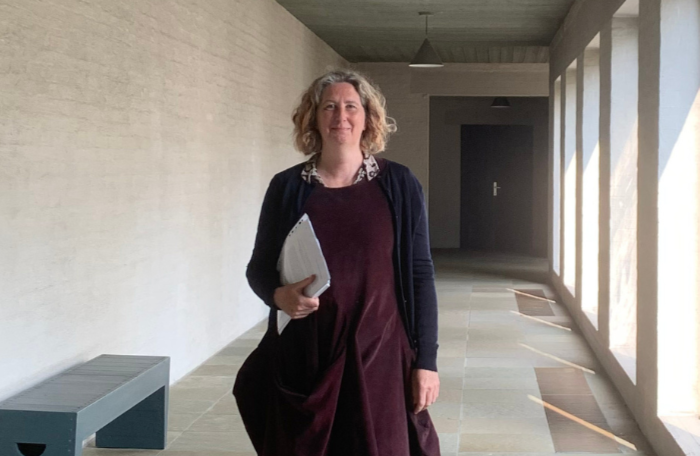What is Women Writing Architecture?
Live since the end of June 2021, Women Writing Architecture is an online, open-source, annotated bibliography of writing by women about architecture.
Initially designed to serve as a resource for academics and teachers when creating book lists and searching for critics - for example, the intention was to make it easier to stretch and test ‘the canon’ of architecture and its history - but we are finding that many more practitioners are reading contributing to the list.
Marie-José Van Hee, Jane Hall, Maria Conen, Roz Barr, and William Mann have all written what we call 'annotations' about writing by women (explained below), and Gerard Carty, Director at Grafton Architects, has contributed a collection on the writing of Elizabeth Bowen, with some annotations on her books explaining their connection to architecture.
According to their website, Women Writing Architecture is a communal space and an entangled matrix for 'gathering, publishing and sharing annotated lists of texts; for encouragement, for finding new writers; and for insight into what is happening in the vivid realm where women speak up for themselves.'
Each of the three terms in the name – Women Writing Architecture – are under question, as we ask: 'what is architecture when written about by women?’ ‘who defines themselves as a woman (after Paul B. Preciado)?’ and even, ‘what is writing in our super-social-mediated age?’
At first glance, the landing page of the website is both simple and sometimes confusing – a list of texts (which we call citations) framed by two columns: collections on the left, and annotations on the right.
Time must be taken, and patience wielded, to see all the parts: to use the filters or embark on a search across the archive; to tentatively click the first + and compile a personal collection (then email it to people); to visit the forum and find out what we have been producing; to discover and browse through all the people and organisations who have already contributed to this communal venture.
Everyone is invited to participate, and men are especially encouraged to join in celebrating writing by women about architecture.
How does Women Writing Architecture work?
This is quite a difficult question to answer because we think, from conversations we’ve had with people, that it works differently and has different meanings for everyone.
We know how many people visit the website, and roughly where they are, but we don't really know what content is being used, when, or how.
This question could be answered in another way, however, if I explain how the bibliography is amassed. Each citation in the list is connected to at least one 'annotation' or 'collection'.
An annotation is an individual’s response to a citation, a text, that encompasses their thoughts, opinions, and research. It can be anything from a couple of sentences about why this text is important, perhaps as what Sarah Ahmed calls a ‘companion text’, to an extensive, illustrated piece of work around the citation that we could develop through an editorial process together.
A collection is a group of citations drawn from syllabi, events, bookshops, personal interest, and many other inspirations. This method of addition means that the system works best when suggested texts are the work of others, rather than by the author themselves. In this way, the value of a text is created by the number of times it is meaningful to someone, chosen as part of a collection or annotated once or many times. This approach is inspired by the 'long spoons' allegory - a multicultural reference point of helping others in order to survive when it's not always possible to help yourself.

How did Women Writing Architecture come about?
Although the ambition for exploiting the potential of the internet to create an entangled creative realm had existed in my imagination for several years, it was not until the autumn of 2020 that the project really began.
In joining forces with Sarah Handelman - then a colleague at Drawing Matter - the imaginary started to take on a reality in the shape of a design brief. By December 2020, we were ready to hand this over to Lizzie Malcolm of Rectangle, a self proclaimed designer of non-linear narratives.
In the six months between commissioning Rectangle and going live, we worked with an advisory board to contact as many people as possible to invite them to contribute to what was, at that point, still an abstract idea. We were lucky to be supported by Mary McLeod and Amale Andraos, who connected us to people like Mary Norman Woods, Annmarie Adams, Despina Stratigakos, and other revered historians and teachers who made the generous early contributions that form the backbone of our list.
Our advisors also helped us to reflect on how to move outside our own realities – from our European location into the southern hemisphere and looking eastwards, to engaging the essential perspectives of decolonisation and transgender experience, for example.
This vital work - currently carried out by myself and Emilie Appercé as editors, assisted by Jaehee Shin - is ongoing and incomplete, providing us with perhaps our biggest challenge.
Can I take part in Women Writing Architecture?
Yes, everyone is invited to participate.
Email us at editors@womenwritingarchitecture.org and initiate a dialogue – with suggestions for citations, an idea that we haven’t thought of yet, or even a proposal for a collaboration.
We have various initiatives that invite participation and suggestion, including the A Book I Love podcast series and the Glossator collection. Glossators include 'Space as Matrix Constellation' by Geraldine Tedder.
Send us citations, either with an annotation or as part of a collection, via our 'participate' page.
Sign up for the Women Writing Architecture newsletter.
What’s next for Women Writing Architecture?
We are setting up an online publishing house, Women Writing Architecture (publishing) and planning to launch the first titles this summer. We are interested in receiving proposals for books, long essays and graphic works.
Find upcoming events in our forum.
About the author

Helen Thomas is an architect, writer and publisher, and editor of Women Writing Architecture.
Words by Helen Thomas, founder and editor of Women Writing Architecture. Edited by Jessie Buckle, Architectural Designer and Inclusive Design Consultant, BArch (Hons) MArch (Dist.) PGCE (Dist.) FHEA SFHEA.









